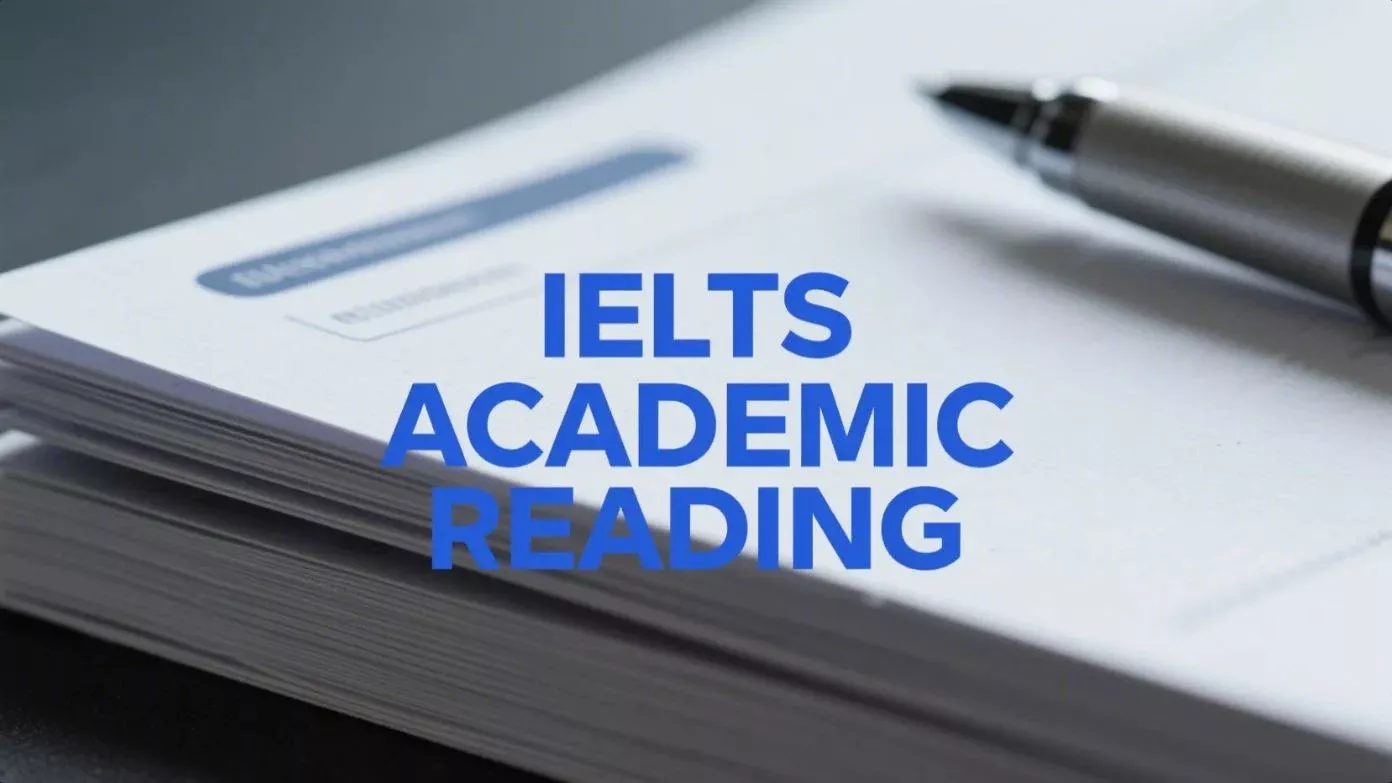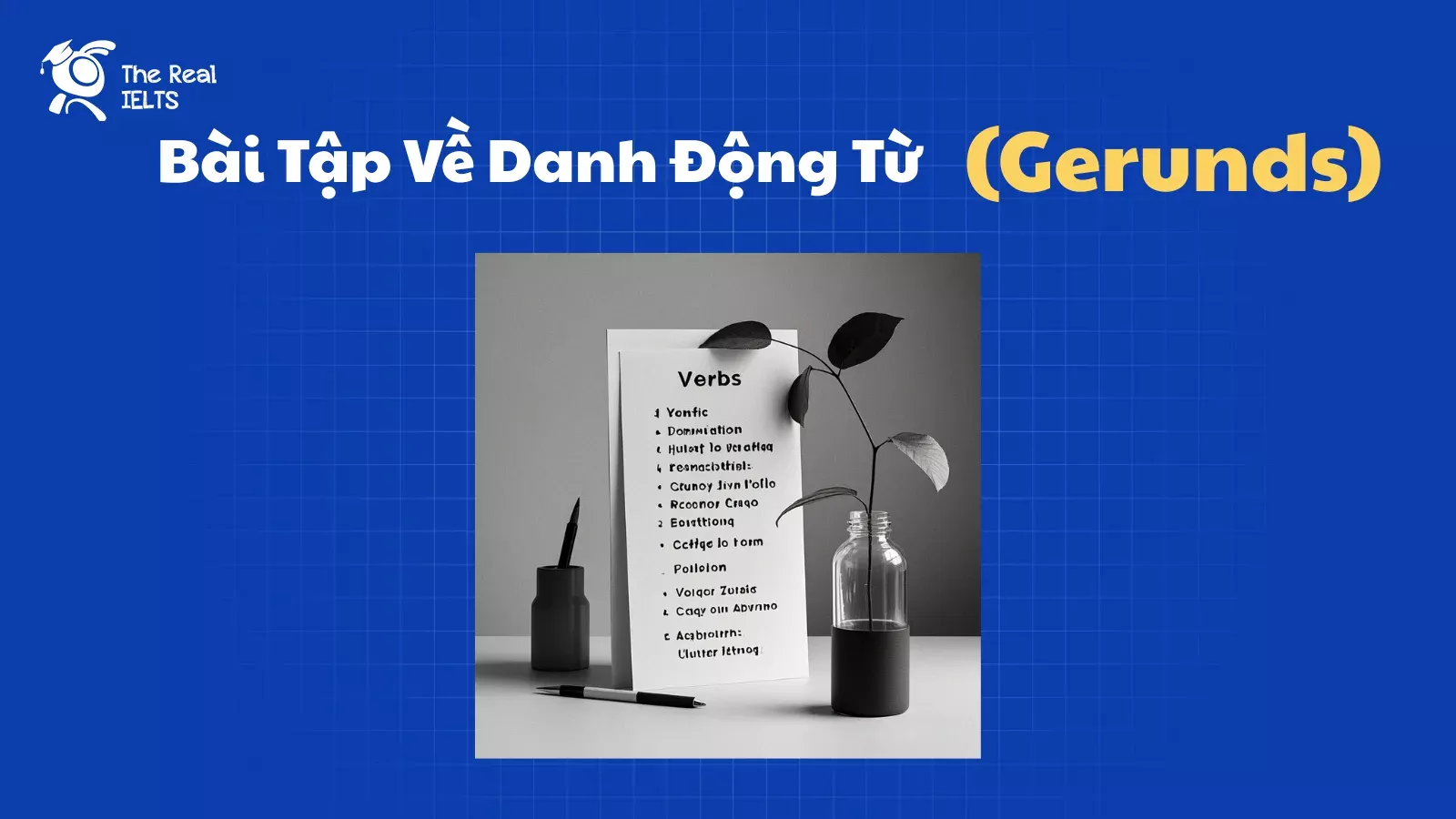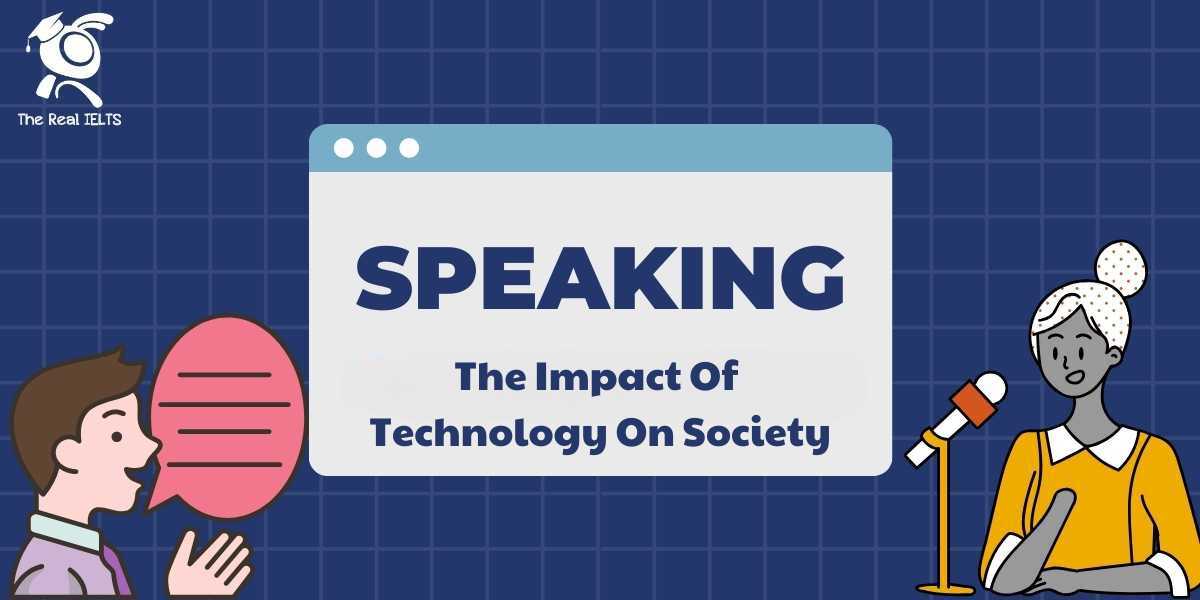Kỹ năng đọc hiểu trong kỳ thi IELTS đòi hỏi sự tập trung và chiến lược rõ ràng để vượt qua các bài đọc học thuật phức tạp. IELTS Reading kiểm tra khả năng nắm bắt ý chính, phân tích chi tiết và xử lý từ vựng chuyên sâu trong thời gian giới hạn. Để đạt band điểm từ 5 đến 8+, thí sinh cần rèn luyện kỹ thuật skimming, scanning và quản lý thời gian hiệu quả, đảm bảo tiếp cận bài thi một cách thông minh và chính xác.
Đọc thêm: IELTS ACADEMIC READING TEST 2 – BAND 7.0+
PASSAGE 1: ARTIFICIAL INTELLIGENCE IN MEDICINE
You should spend about 20 minutes on Questions 1–14, which are based on the reading passage below.
Artificial Intelligence (AI) is transforming numerous industries, and healthcare is no exception. From early diagnosis to personalized treatments, AI systems are now playing a crucial role in medical practice.
One of the primary uses of AI in medicine is in diagnostic imaging. Machine learning models trained on thousands of scans can now detect abnormalities such as tumors or fractures with a level of accuracy rivaling, and in some cases surpassing, that of experienced radiologists.
In predictive analytics, AI systems assess vast datasets—patient histories, genetics, lifestyle factors—to forecast potential health issues. For example, algorithms can identify individuals at risk of developing heart disease years before symptoms emerge, allowing for preventive interventions.
AI also enhances drug discovery. Traditionally, developing new medications takes years and significant investment. AI can rapidly model interactions between compounds and human cells, significantly reducing development time.
However, challenges persist. Data privacy is a growing concern, especially with sensitive health records. Additionally, AI models may perpetuate biases if trained on non-representative data. There’s also the issue of explainability—many algorithms operate as “black boxes,” offering little insight into how conclusions are reached.
Despite limitations, the integration of AI into medicine appears inevitable. Many experts argue that rather than replacing doctors, AI will become a powerful assistant, augmenting human expertise and improving healthcare outcomes globally.
QUESTIONS 1–14
Choose the correct answer A, B, C, or D.
1. In which area is AI most notably used in medicine?
A. Surgery
B. Diagnostic imaging
C. Nursing care
D. Physiotherapy
2. What allows AI to detect medical abnormalities?
A. Human intuition
B. Genetic sequencing
C. Training on medical scan datasets
D. Robotic surgery
3. What is the goal of predictive analytics in healthcare?
A. Cure rare diseases
B. Shorten hospital stays
C. Forecast future health risks
D. Improve nutrition advice
4. What benefit does AI bring to drug discovery?
A. Eliminates need for clinical trials
B. Reduces development time
C. Makes drugs more expensive
D. Replaces pharmaceutical companies
5. Why is data privacy a concern with AI?
A. Algorithms use personal online profiles
B. Health records are sensitive
C. AI cannot be encrypted
D. Data is stored on paper
6. What can cause AI models to reflect bias?
A. Lack of supervision
B. Small memory size
C. Biased training data
D. Weak internet connection
7. Why is explainability an issue in AI?
A. AI refuses to share data
B. Many models are too simple
C. Algorithms often don’t clarify decision processes
D. Doctors are not trained in coding
8. What is a potential advantage of AI according to the passage?
A. Replacing all medical staff
B. Increasing paperwork
C. Assisting rather than replacing doctors
D. Promoting robotic surgery
9. What is meant by “black box” in AI?
A. A physical storage unit
B. An outdated computing model
C. An algorithm with unclear decision logic
D. A type of neural interface
10. How does AI improve early intervention?
A. By making medication cheaper
B. By increasing emergency visits
C. By predicting illness before symptoms appear
D. By reducing patient contact
11. What role does AI play in improving global healthcare?
A. Limiting diagnosis to rich countries
B. Replacing nurses
C. Augmenting medical knowledge and accessibility
D. Avoiding high-tech tools
12. Which of the following is a limitation of current AI models?
A. They’re too slow
B. They can’t access data
C. They don’t explain how they reach conclusions
D. They only work in labs
13. What is implied about future AI integration?
A. It will be banned in medicine
B. It will focus on nutrition only
C. It is expected to become standard
D. It will reduce medical ethics
14. The author’s attitude toward AI in medicine is:
A. Fearful and critical
B. Optimistic yet cautious
C. Disinterested
D. Fully negative
PASSAGE 2: THE FUTURE OF URBAN TRANSPORT
You should spend about 20 minutes on Questions 15–28, which are based on the reading passage below.
As cities grow and congestion worsens, urban transportation faces critical challenges. Traditional solutions like road expansion are proving insufficient. Instead, cities are increasingly turning to sustainable transport innovations to reduce traffic, pollution, and carbon emissions.
One promising development is the rise of autonomous vehicles (AVs). These self-driving cars promise fewer accidents and more efficient traffic flow. However, their integration raises legal and ethical questions, such as who is responsible in the case of an accident and how AVs should prioritize pedestrian safety.
Another innovation is Mobility-as-a-Service (MaaS), which combines various transport modes—buses, bikes, trains—into a unified digital platform. Through a smartphone app, users can plan, book, and pay for trips involving multiple providers. This encourages multi-modal travel and reduces dependence on private cars.
Micromobility is also transforming short-distance travel. Shared bicycles and electric scooters provide flexible and eco-friendly alternatives to cars, particularly in densely populated areas. However, issues such as sidewalk clutter, vandalism, and safety regulations must be addressed.
Public transport systems remain central to sustainable urban mobility. Innovations like electric buses and real-time tracking enhance efficiency and user experience. Nevertheless, funding constraints and aging infrastructure limit progress in many cities.
The transition to smarter, greener transportation requires not just new technology but also policy reform and public engagement. Urban planners, policymakers, and citizens must work collaboratively to reshape how people move in the 21st century.
QUESTIONS 15–28
Choose the correct answer A, B, C, or D.
15. What is the main issue with expanding roads as a transport solution?
A. It’s too fast
B. It lacks modern technology
C. It no longer solves traffic problems
D. It increases air quality
16. What benefit is associated with autonomous vehicles?
A. Fewer jobs for drivers
B. Lower vehicle prices
C. Safer and smoother traffic
D. No need for licenses
17. What legal issue surrounds AVs?
A. How to park them
B. Whether they can fly
C. Who is liable during accidents
D. How much they cost
18. What does Mobility-as-a-Service (MaaS) combine?
A. Gas and electricity
B. Private and luxury cars
C. Various public transport options
D. Food and mobility packages
19. MaaS encourages what kind of transportation behavior?
A. Solo driving
B. Avoiding peak hours
C. Multi-modal travel
D. Working from home
20. What is micromobility best suited for?
A. Long-distance commuting
B. Traveling by sea
C. Short urban trips
D. Airplane connections
21. Which of the following is a problem with micromobility?
A. High cost of fuel
B. Sidewalk obstruction
C. Poor mobile apps
D. Lack of electricity
22. What is the benefit of electric buses?
A. They avoid traffic lights
B. They need no drivers
C. They improve efficiency and reduce emissions
D. They operate 24/7
23. Why do public transport systems face limitations?
A. Banned in most cities
B. Declining interest in buses
C. Budget issues and old infrastructure
D. Conflicts with micromobility
24. What must accompany new technology in transport?
A. Better car sales
B. Tax reductions
C. Policy change and public cooperation
D. Expansion of airports
25. What is one goal of sustainable transport innovation?
A. Increase car ownership
B. Reduce pollution
C. Expand suburbs
D. Sell more fuel
26. What is the role of real-time tracking in transport?
A. Provides live updates to users
B. Prevents breakdowns
C. Replaces tickets
D. Detects accidents
27. The author believes solving urban transport requires:
A. Global charities
B. Complex road designs
C. Technology and community effort
D. Private airlines
28. The passage mainly discusses:
A. The failure of cars
B. Innovations and strategies for future urban mobility
C. Pollution from trucks
D. Decline in public transport popularity
PASSAGE 3: LANGUAGE ACQUISITION IN CHILDREN
You should spend about 20 minutes on Questions 29–42, which are based on the reading passage below.
Children acquire language with remarkable speed, often mastering complex grammar and vocabulary by age five. This phenomenon has puzzled linguists and psychologists for decades: how do young learners, with limited cognitive ability, learn a system as intricate as language?
One theory, proposed by Noam Chomsky, suggests that humans possess an innate language faculty—a “universal grammar” embedded in our biology. According to Chomsky, children are born with a mental framework that allows them to rapidly absorb the language(s) they are exposed to.
Other researchers emphasize the role of social interaction and environment. Psychologist Jerome Bruner argued that scaffolding—support provided by adults during conversation—helps children grasp linguistic rules. For instance, when a parent repeats or rephrases a child’s sentence, it reinforces grammar patterns.
Another key factor is critical periods—windows of time during which the brain is especially receptive to language input. Studies of children deprived of language early in life show long-term linguistic deficits, supporting the idea that early exposure is vital.
Bilingualism also offers insights. Children raised in multilingual environments can acquire two or more languages simultaneously, often without confusion. Far from causing delays, research shows bilingualism enhances cognitive flexibility and problem-solving skills.
While no single theory fully explains language acquisition, most experts agree it involves both innate mechanisms and environmental input. Advances in neuroscience and linguistics continue to shed light on this uniquely human ability.
QUESTIONS 29–42
Choose the correct answer A, B, C, or D.
29. What is impressive about children’s language acquisition?
A. They learn only by reading
B. They memorize every word
C. They master language quickly and young
D. They often avoid complex grammar
30. What is Chomsky’s theory?
A. Language is taught by teachers
B. Humans are born with a language structure
C. Vocabulary must be memorized
D. All children speak the same language
31. What does “universal grammar” imply?
A. All languages have identical rules
B. Grammar is hard to learn
C. Humans share a built-in grammar system
D. Children must study grammar explicitly
32. What is Bruner’s theory focused on?
A. Genetic inheritance
B. Intelligence testing
C. Adult-child interaction
D. Reading and writing skills
33. What is “scaffolding” in the context of language learning?
A. Teaching only nouns
B. Giving structural support in conversation
C. Correcting spelling mistakes
D. Encouraging silence
34. Why are “critical periods” important?
A. They teach logic
B. They prevent memory loss
C. Language is learned more easily during these times
D. Children forget everything afterward
35. What do studies of linguistically deprived children show?
A. Language is not necessary
B. Early input is essential
C. Grammar is instinctive
D. Vocabulary comes later
36. How do bilingual children perform compared to monolinguals?
A. They are delayed
B. They are confused
C. They show cognitive benefits
D. They speak more slowly
37. What is one benefit of bilingualism?
A. Poor pronunciation
B. Improved problem-solving
C. Less interaction
D. Easier grammar
38. What is suggested about bilingual learning?
A. It is harmful
B. It creates delays
C. It helps mental flexibility
D. It requires tutoring
39. What does the passage say about different theories of language learning?
A. One theory explains everything
B. No theories agree
C. It is purely instinctual
D. Multiple factors contribute
40. What field is helping us better understand language acquisition?
A. Agriculture
B. Astronomy
C. Neuroscience
D. Economics
41. What do Bruner and Chomsky agree on?
A. Environment is more important
B. Grammar is irrelevant
C. Children are passive learners
D. Language learning is complex
42. The overall tone of the passage is:
A. Critical
B. Descriptive and balanced
C. Sarcastic
D. Dismissive
ĐÁP ÁN & GIẢI THÍCH – IELTS READING TEST 3
PASSAGE 1: ARTIFICIAL INTELLIGENCE IN MEDICINE
| Câu | Đáp án | Giải thích |
|---|---|---|
| 1 | B | AI được ứng dụng nổi bật trong chẩn đoán hình ảnh (diagnostic imaging). |
| 2 | C | AI phát hiện bất thường nhờ được huấn luyện trên dữ liệu quét y tế. |
| 3 | C | Predictive analytics dùng để dự đoán rủi ro sức khỏe trong tương lai. |
| 4 | B | AI rút ngắn thời gian phát triển thuốc bằng mô phỏng nhanh. |
| 5 | B | Lo ngại chính là thông tin y tế rất nhạy cảm. |
| 6 | C | Nếu AI được huấn luyện trên dữ liệu không đại diện → sinh thiên lệch (bias). |
| 7 | C | “Black box” ám chỉ thuật toán không giải thích rõ cách đưa ra kết luận. |
| 8 | C | AI hỗ trợ bác sĩ thay vì thay thế họ. |
| 9 | C | “Black box” = thuật toán đưa ra quyết định không minh bạch. |
| 10 | C | AI dự đoán bệnh trước khi triệu chứng xuất hiện. |
| 11 | C | AI nâng cao tri thức y khoa & mở rộng tiếp cận toàn cầu. |
| 12 | C | Hạn chế là AI không thể giải thích cách đưa ra quyết định. |
| 13 | C | Tác giả nói AI sẽ trở thành xu hướng tất yếu trong tương lai. |
| 14 | B | Giọng điệu: Lạc quan có điều kiện, nhấn mạnh lợi ích và rủi ro. |
PASSAGE 2: THE FUTURE OF URBAN TRANSPORT
| Câu | Đáp án | Giải thích |
|---|---|---|
| 15 | C | Mở rộng đường không còn giải quyết được ùn tắc. |
| 16 | C | AVs (xe tự lái) giảm tai nạn và cải thiện lưu thông. |
| 17 | C | Vấn đề pháp lý: trách nhiệm khi xảy ra tai nạn. |
| 18 | C | MaaS = kết hợp nhiều phương tiện công cộng qua nền tảng số. |
| 19 | C | MaaS khuyến khích di chuyển đa phương tiện. |
| 20 | C | Micromobility phù hợp di chuyển ngắn trong thành phố. |
| 21 | B | Micromobility gây lộn xộn vỉa hè là vấn đề phổ biến. |
| 22 | C | Xe bus điện giúp hiệu quả hơn & giảm khí thải. |
| 23 | C | Giao thông công cộng gặp khó do thiếu ngân sách & hạ tầng cũ. |
| 24 | C | Giải pháp giao thông cần cải cách chính sách & sự tham gia cộng đồng. |
| 25 | B | Mục tiêu của giao thông bền vững: giảm ô nhiễm. |
| 26 | A | Real-time tracking cung cấp thông tin trực tiếp cho hành khách. |
| 27 | C | Giải pháp cần cả công nghệ và nỗ lực tập thể. |
| 28 | B | Bài viết tập trung vào các đổi mới và chiến lược giao thông tương lai. |
PASSAGE 3: LANGUAGE ACQUISITION IN CHILDREN
| Câu | Đáp án | Giải thích |
|---|---|---|
| 29 | C | Trẻ học ngôn ngữ nhanh chóng và từ rất sớm. |
| 30 | B | Chomsky cho rằng con người có khả năng ngôn ngữ bẩm sinh. |
| 31 | C | “Universal grammar” là hệ thống ngữ pháp bẩm sinh mà con người chia sẻ. |
| 32 | C | Bruner nhấn mạnh vai trò của tương tác giữa người lớn và trẻ. |
| 33 | B | “Scaffolding” = hỗ trợ cấu trúc khi trò chuyện để giúp trẻ học quy tắc ngôn ngữ. |
| 34 | C | Critical periods là giai đoạn não nhạy cảm với ngôn ngữ. |
| 35 | B | Trẻ bị cách ly ngôn ngữ sớm thường gặp khó khăn lâu dài về ngôn ngữ. |
| 36 | C | Trẻ song ngữ có nhiều lợi ích nhận thức hơn. |
| 37 | B | Song ngữ giúp giải quyết vấn đề tốt hơn. |
| 38 | C | Song ngữ tăng tính linh hoạt nhận thức. |
| 39 | D | Bài viết nói rằng nhiều yếu tố kết hợp trong quá trình học ngôn ngữ. |
| 40 | C | Neuroscience (khoa học thần kinh) đang hỗ trợ tìm hiểu quá trình này. |
| 41 | D | Cả Bruner và Chomsky đều công nhận sự phức tạp của học ngôn ngữ. |
| 42 | B | Giọng điệu bài viết mô tả khách quan, cân bằng giữa các lý thuyết. |















